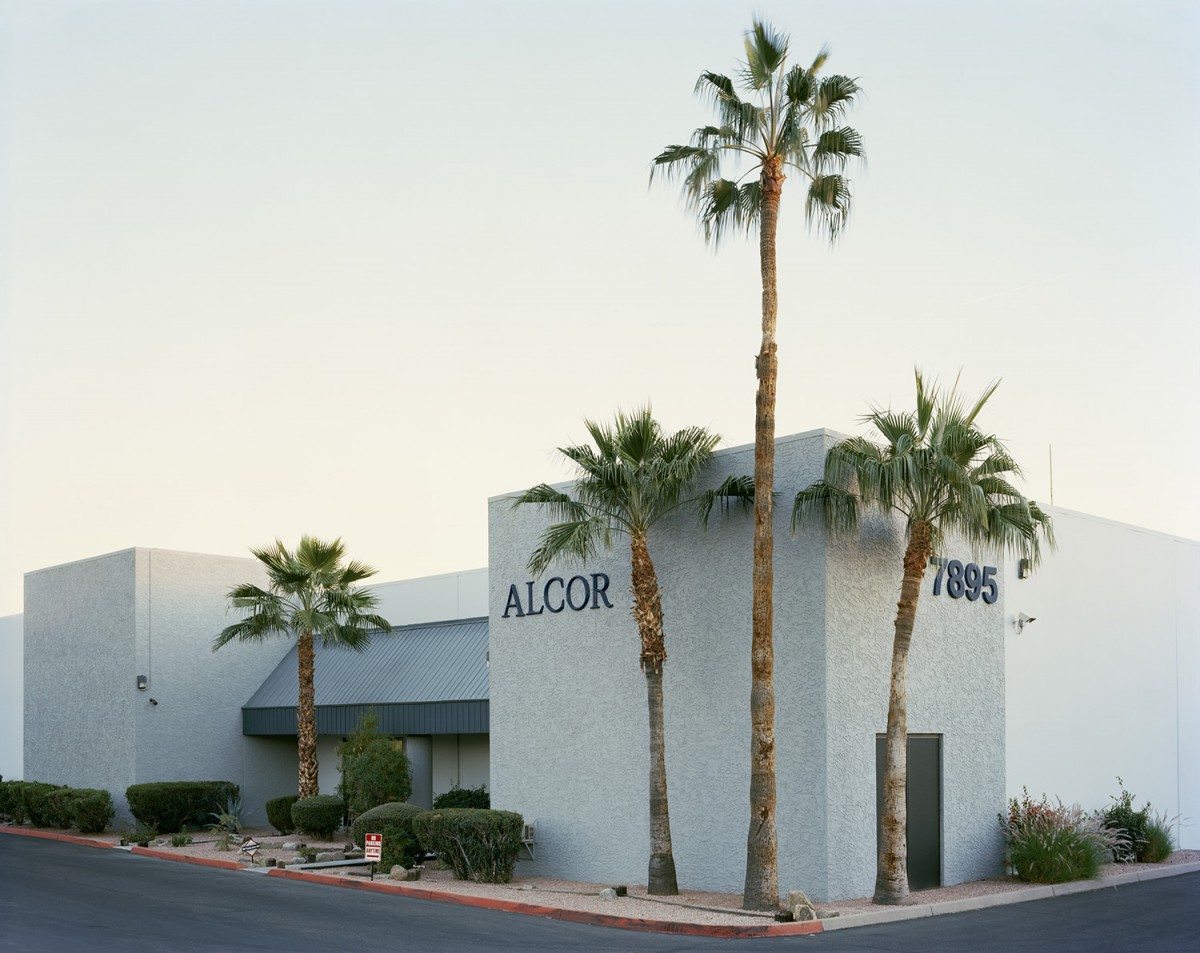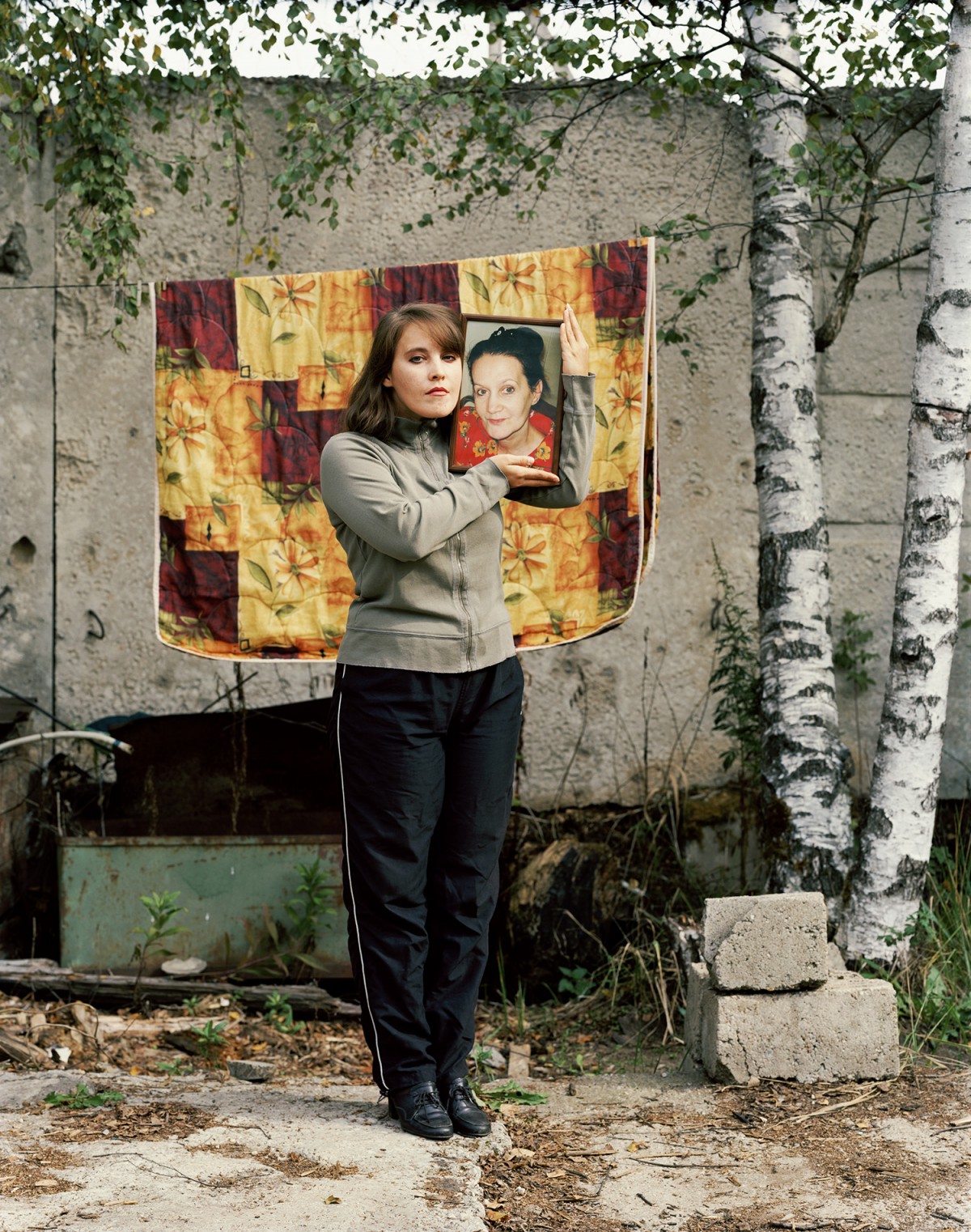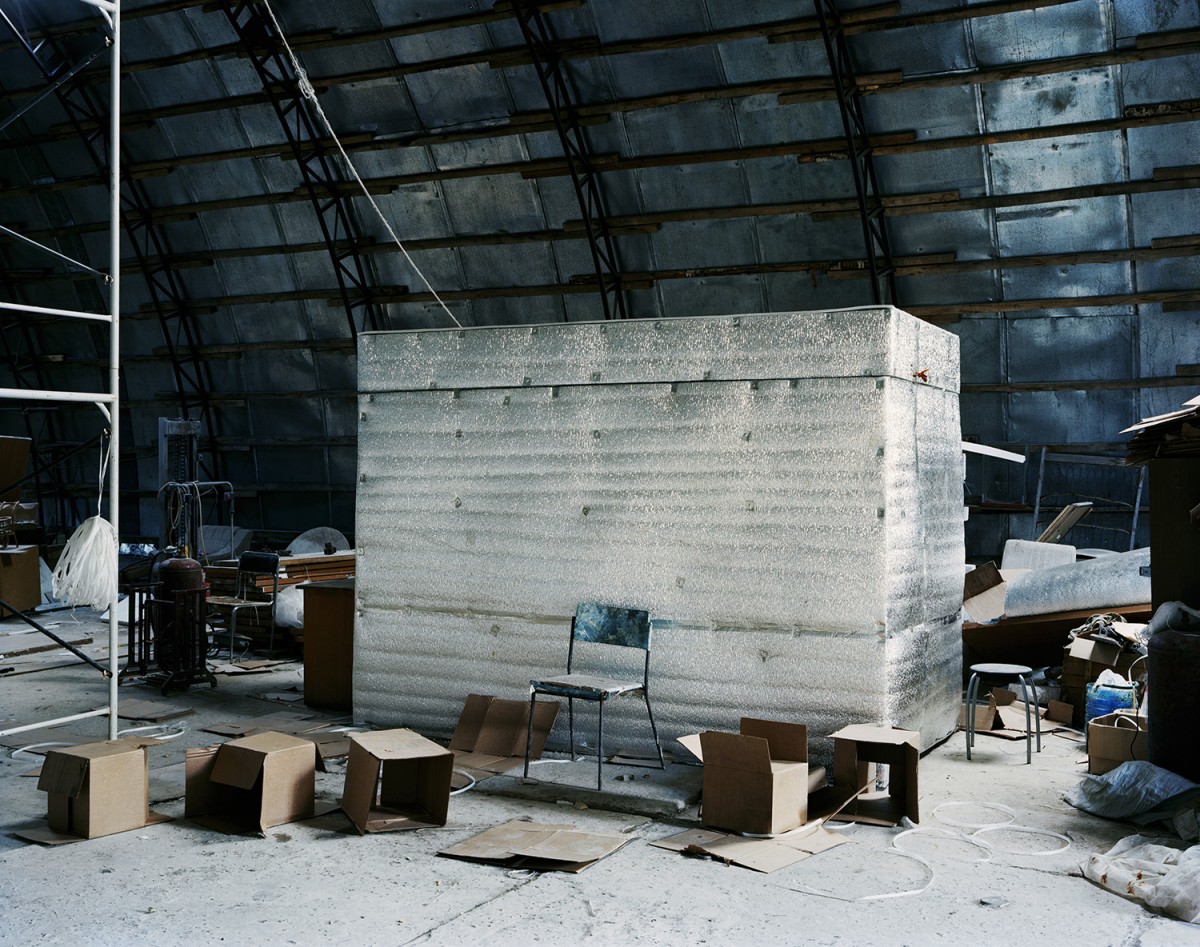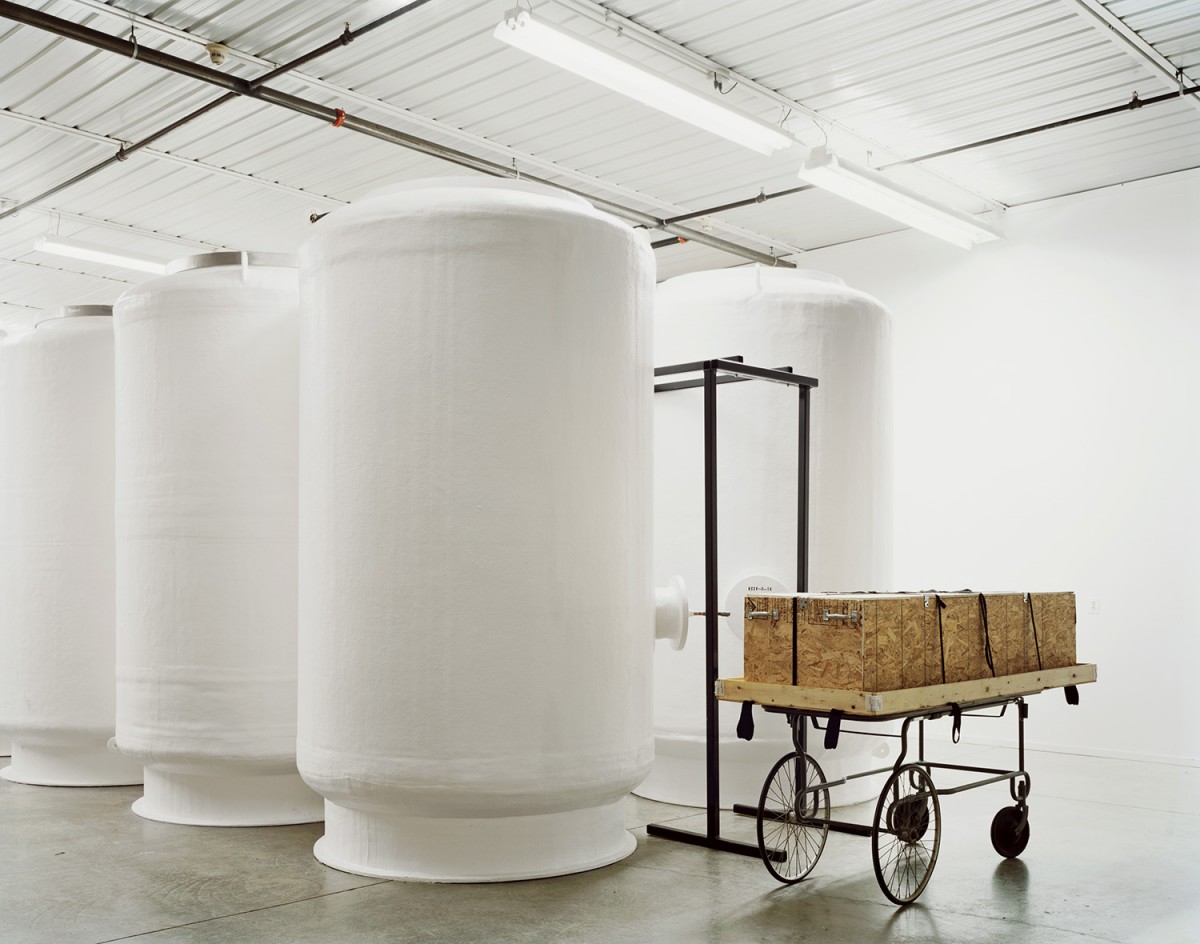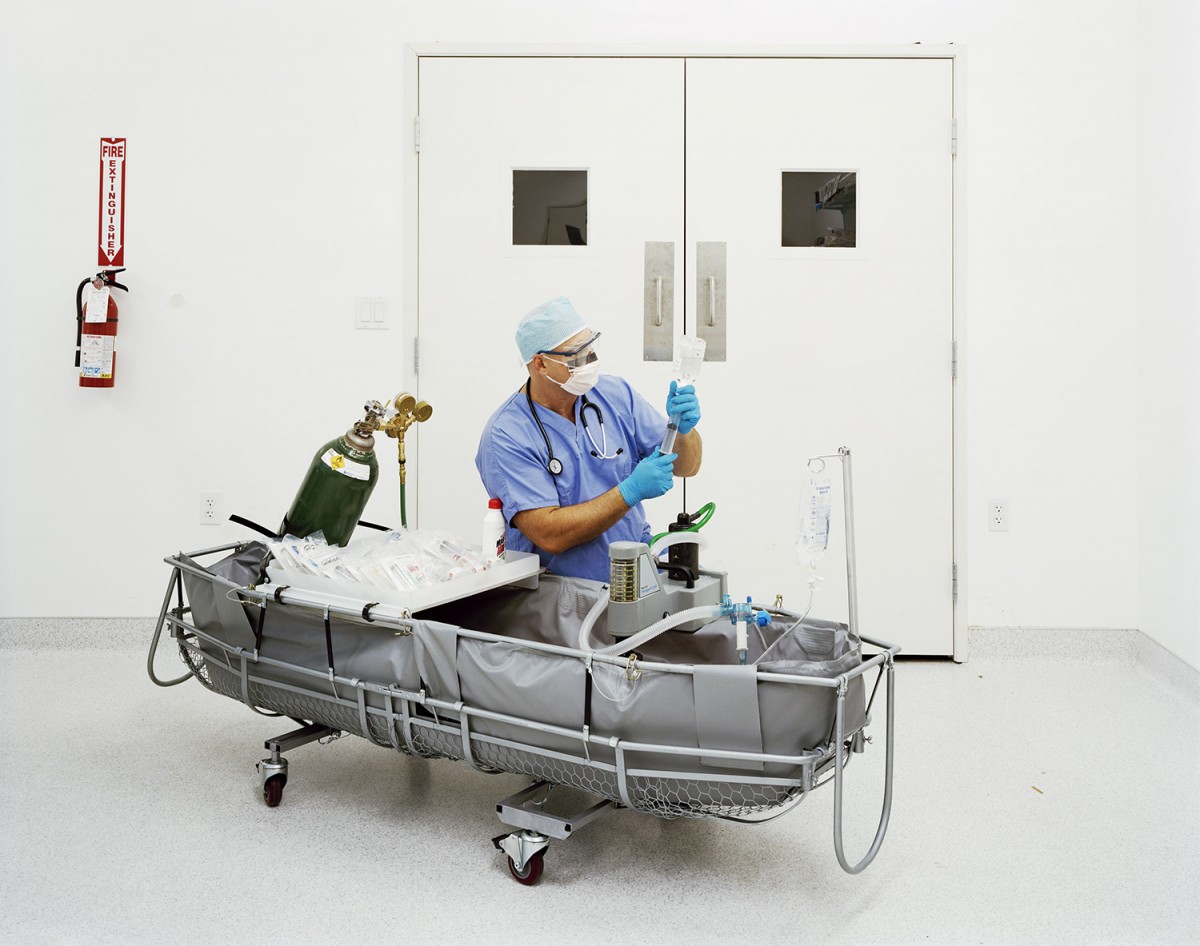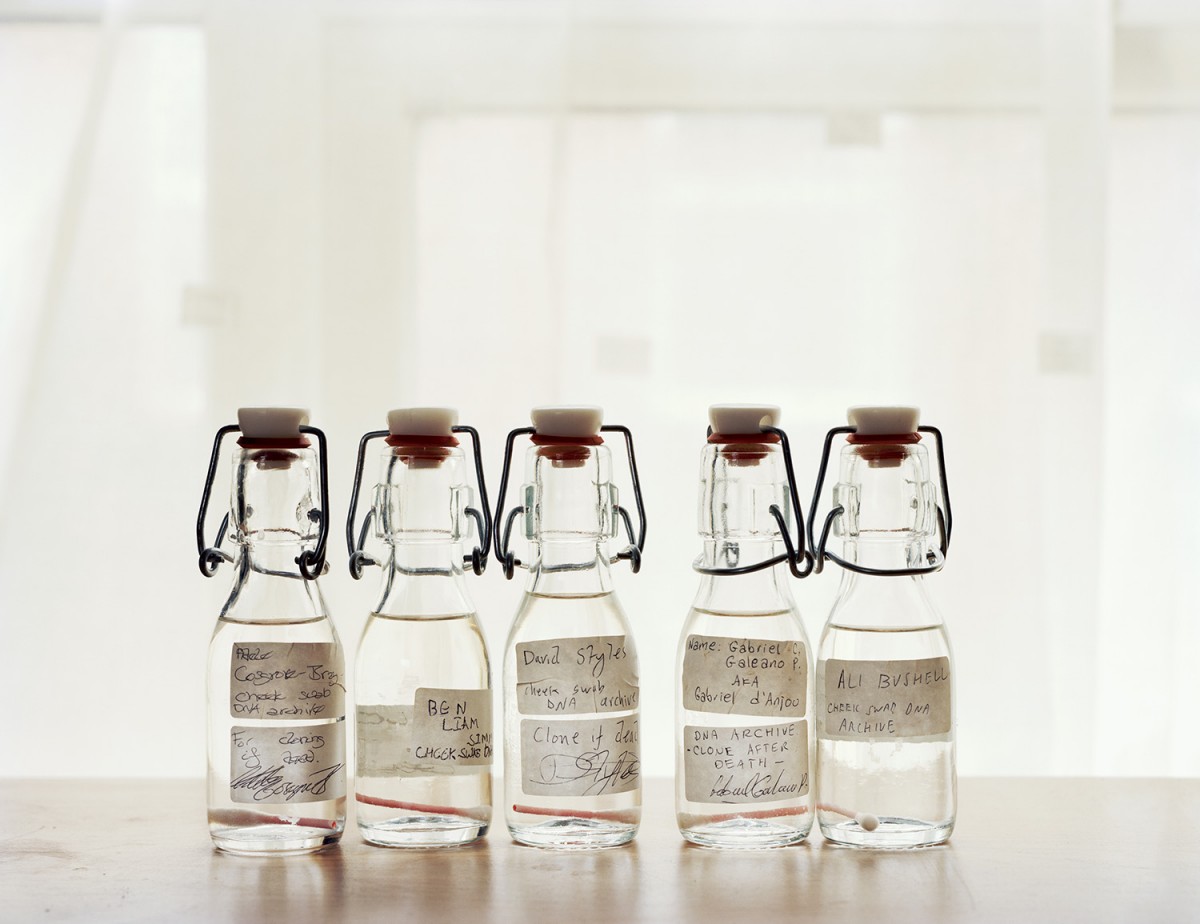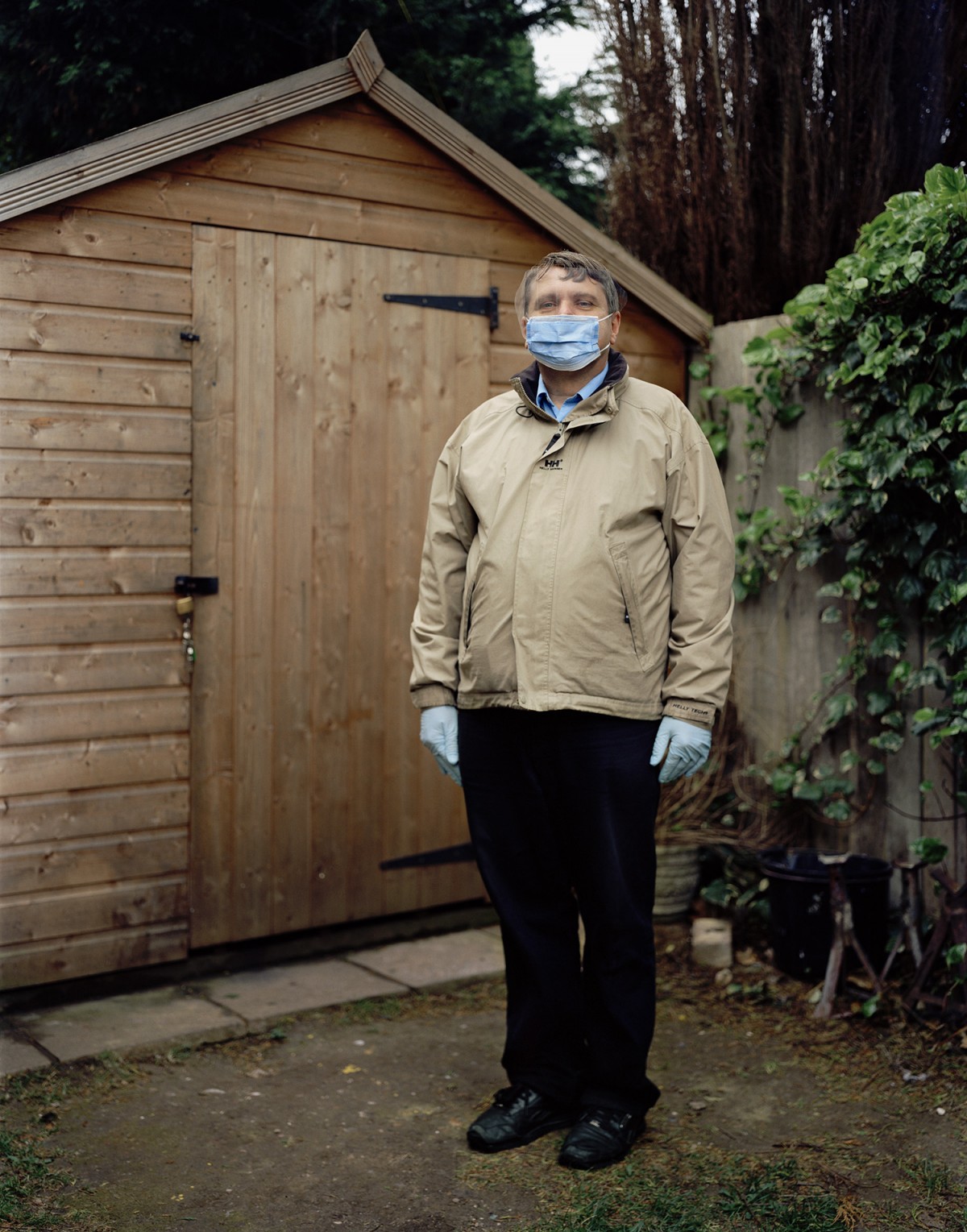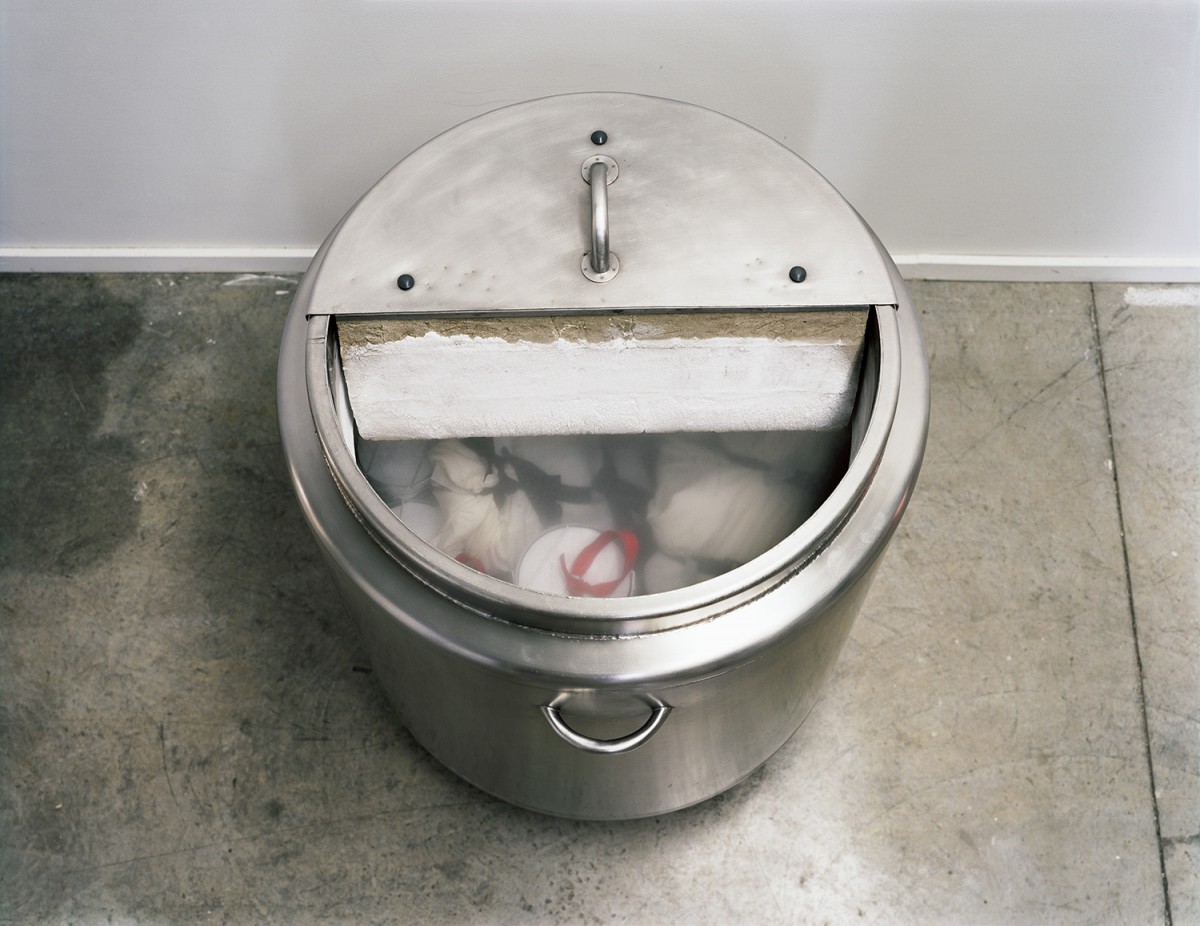Photographer, Murray Ballard talks to us about his recent publication and ten-year series, 'The Prospect of Immortality'.
PW: Your latest body of work The Prospect of Immortality is being published this month by GOST books.
The publication brings together various stories of people going through the process of cryonics. Why were you drawn to cryonics as photographic subject matter?
MB: I started the project when I was studying photography at the University of Brighton. I was reading about photography’s relationship with death and I became interested in the idea of it as a form of preservation. I decided to begin a project exploring this more generally. I listed a number of possible subjects, including: Egyptian mummies, embalmers, taxidermists, seed banks, museum archives and suchlike. I also jotted down ‘cryogenic preservation’, although I knew little or nothing about cryonics at the time. I was aware of the concept through science-fiction and, like a lot of people, I had some vague idea that Walt Disney had been cryopreserved, although that turned out to be an urban myth. I was actually thinking more about organ donation and that kind of thing.
I began the project by spending a day at the local Booth Museum of Natural History, photographing stuffed birds and animals. I remember coming away feeling pretty indifferent; I knew the subject had been well photographed many times before and I didn’t think I’d done anything particularly interesting, or new. Then, later that same week, I was leafing through The Guardian and I came across an article under the headline ‘Freezer failure ends couples hopes of life after death’. It told the story of a French couple who’d had themselves frozen beneath their chateau in the Loire valley. The experiment had come to an untimely end when the freezer broke down and their bodies began to thaw out. The article also mentioned there was a place in the United States called the Cryonics Institute where you could sign up for a more professional form of cryopreservation. Of course, I immediately wanted to jump on a plane and go and see this for myself.

From the book The Prospect of Immortality by Murray Ballard, published by GOST.
PW: Can you talk us through how you came to know and work with these people?
MB: As a student I couldn’t afford to travel to the States for a college project, so I started researching for anything related to cryonics in the UK. Back in 2006 there was much less online, but I eventually found a website for a group of cryonicists in the UK. Alan, the organiser, had posted his address and contact details. Remarkably, he lived in Peacehaven, a small town just twenty minutes down the coast from Brighton, where I was based. I couldn’t believe it! I’d thought I’d have to travel huge distances to photograph cryonics and there it was right on my doorstep. I rang the number, introduced myself, and a couple of days later I was sitting in Alan’s living room discussing cryonics over a cup of tea. He took me out to his garage where he stored his equipment, explaining that because there are no cryonics facilities in the UK it was necessary to do the initial stages of a cryonic suspension here, before transporting the patient to an American facility.

From the book The Prospect of Immortality by Murray Ballard, published by GOST.
I returned a few days later and started photographing the equipment, and then later that year I photographed one of their training meetings. Alan then introduced me to the people who run the facilities in the US. As soon as I got some funding I made my first visit, in October 2006. The project grew from there.

From the book The Prospect of Immortality by Murray Ballard, published by GOST.
PW: You’ve been photographing this series ongoing for about 10 years now. What do you understand about the desire in these people to affect their own mortality?
MB: I’ve met a lot of cryonicists over the years and when I take their portrait I usually interview them as well. They all have different reasons for wanting to be cryopreserved, but I guess the most common is simply the desire to live a longer life. Often they talk about a desire to experience life in the future and how exciting and interesting that would be. Of course, some have expressed a fear of dying and being unable to come to terms with that. However, the majority of cryonicists accept that it’s an experiment and, while the chances of it working are very small, they argue it’s the logical thing to do – you stand a much better chance of coming back to life if you’re cryopreserved than if you’re buried or cremated.
Max More, president of the Alcor Life Extension Foundation, has one of the most interesting perspectives on cryonics and mortality:
“Extending human life-span is the most important goal for our civilisation because what’s happening right now is a holocaust. Essentially millions of people are dying, every year we’re dying in huge numbers, one at a time. We don’t think it’s so bad because we don’t see them all being shot to death in one place, but it is just as bad, huge numbers of deaths going on and we’re just saying, “oh well that’s just natural”, and to me that’s not acceptable, the fact that it’s natural doesn’t make it ok. We need to stop people from ageing, we need to stop people from dying, and those who die before we have adequate technology should be put into cryopreservation. The fact that this is not a standard practice to me is stunning. I think we will look back at this point from the future and we’ll say, what were they thinking?!”

From the book The Prospect of Immortality by Murray Ballard, published by GOST.

From the book The Prospect of Immortality by Murray Ballard, published by GOST.
PW: With technologies advancing all the time, how common a process is this? Are these people pioneers in this field, or will we all be considering cryonics in the not too distant future?
MB: Just over 2000 people have now signed up for cryonics and about 200 people have been cryropreserved. What’s interesting is that when I started my project in 2006 the numbers were roughly half that. The first cryonics patient was preserved in 1965, so during the first forty years just 1000 people signed up and only 100 people were cryopreserved.

From the book The Prospect of Immortality by Murray Ballard, published by GOST.
It’s difficult for me to answer the second part of your question. I’d certainly say cryonicists are pioneers, but it’s impossible to predict if we’ll all be considering cryonics in the near future. But that’s what I like about the subject, it’s speculative and therefore it fires up people’s imaginations and gets them thinking… I try to maintain a degree of objectivity because I want the subject to speak for itself and with my pictures I’m more interested in raising questions than giving answers. That’s what I love about photography: it’s so fragmentary, and there’s a lot of space for the viewer to bring their own ideas to the subject.
Robert Ettinger, the ‘father of cryonics’, who is largely credited with starting the movement back in the Sixties, once told me that he still believes there will be a moment when ‘the dam will burst’ and the masses will sign up. He thinks that will most likely be when some piece of research or some scientific breakthrough occurs, leading to that watershed moment.
PW: Photography has always had a relationship to death and preservation through the act of ‘freezing’ time through a frame. In photographing these people, what do you hope to achieve? Are you trying to create a legacy for them, extending beyond this process?
MB: To be honest I’m not entirely sure what I hope to achieve. I think my motivation has changed over the years. At the beginning I was totally captivated by the subject; I was just interested in exploring it as extensively as I could. As I said before, ten years ago when you typed ‘cryonics’ into Google you didn’t really find very much. It was hard to get an understanding of what was going on. Actually I’ve found myself thinking about that a lot lately. It’s very different now: there’s a wealth of material out there for anyone with Internet access about almost everything. That’s definitely changing the way a lot of photographers are working. I wonder if I’d have been so intent on discovering the subject for myself if there’d been a plethora of information easily available. Would I still have felt I was on a real adventure? Anyway, back to the question, for a long time I think I was, somewhat naively, trying to make the definitive document about cryonics. But at some point, probably in 2011 in the run up to the exhibition at Impressions Gallery, I realised this was impossible and the work should be the result of my experience and my own interpretation of the subject.

From the book The Prospect of Immortality by Murray Ballard, published by GOST.
The photographs have been published a number of times over the years in magazines and newspapers, which has financially enabled me to continue the project, but with them I was never in full control of how they were used. With the book, and doing it with a publisher like GOST, it’s my opportunity to make something that really represents my own experience and interests. Having said all that, my book happens to have been published just over fifty years after the first cryopreservation (in 1965) and it is inevitably somewhat representative of cryonics today, or between 2006-2016.
Going back to the first part of your question, it wasn’t until after I started the project that I discovered this quote from Susan Sontag’s On Photography where she talks about photography and its relationship with death. It says it all really: “All photographs are memento mori. To take a photograph is to participate in another person’s (or thing’s) mortality, vulnerability, mutability. Precisely by slicing out this moment and freezing it, all photographs testify to time’s relentless melt.”

From the book The Prospect of Immortality by Murray Ballard, published by GOST.
PW: You’ve documented different aspects of cryonics, from looking at the equipment used, to the people willing to undertake it. Would you ever consider doing it yourself?
MB : Of course I’ve thought about it. For a while I considered signing up could be part of the project, until someone pointed out that it would change how people read the work, so I decided against it.
On the other hand, one cryonicist once said to me that, really, I have to sign up in order to finish my project, because at the moment I’ve only photographed half the process…

From the book The Prospect of Immortality by Murray Ballard, published by GOST.

From the book The Prospect of Immortality by Murray Ballard, published by GOST.
To find out more about Murray’s work, click here.
For more on GOST Books, click here.
For more Ideas Series articles, click here.

